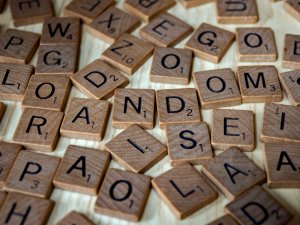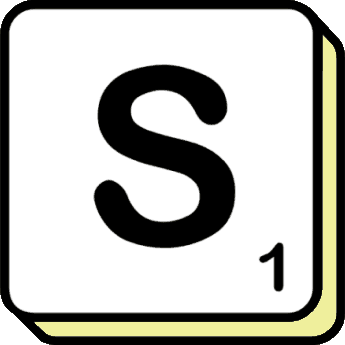Cryptic Crosswords and Solving Methods
Author: Brian Bowman
Date Published: 5 June 2023
Cryptic crosswords have long been a beloved pastime for puzzle enthusiasts and wordplay aficionados. With their intricate clues and clever wordplay, solving a cryptic crossword can be a gratifying and intellectually stimulating experience. In this article, we will explore the fascinating world of cryptic crosswords and delve into some effective solving methods to help you conquer these perplexing puzzles.

What are Cryptic Crosswords?
Cryptic crosswords are crossword puzzles that consist of two parts: a definition and a cryptic clue. Unlike regular crosswords, where the clues directly lead to the answers, cryptic clues are designed to be more cryptic and challenging. They often involve wordplay, puns, anagrams, and other linguistic devices to create a web of deception that requires both logical and lateral thinking.
Decoding Cryptic Clues
To successfully solve cryptic crosswords, it's essential to understand the different types of clues commonly encountered. Here are some of the main types:
Anagrams: These clues involve rearranging the letters of a word or phrase to form a new word. Look for indicator words like "mixed," "scrambled," or "confused" that signal an anagram.
Example: "Doctor's odd potion is a fruit (6)" The clue here indicates an anagram. By rearranging the letters of "doctor" and taking the odd letters of "potion," we get the answer: CITRUS.
Charades: In charade clues, the answer is formed by combining two or more smaller words, like the pieces of a puzzle. Indicator words like "composed of," "with," or "made up of" hint at a charade clue.
Example: "Wild animal with big tail (4)" The answer here is LION. "Wild" indicates that we need a synonym for "wild animal," and "big tail" suggests using the last letter of "tail" to complete the word.
Double Definitions: These clues provide two different definitions for the same word. They can be straightforward but often require thinking beyond the obvious meaning.
Example: "Avenue and a fashion (5)" The answer here is MODES. Both "avenue" and "fashion" are definitions for the word MODES.
Hidden Words: Clues of this type hide the answer within the clue itself. Indicator words like "hidden," "buried," or "inside" suggest that the answer can be found within the clue's text.
Example: "Actress appears in comedy show (7)" The answer here is CAPRICE. The word "actress" is hidden within "comedy show."
Developing Solving Strategies
Solving cryptic crosswords can be challenging at first, but with practice and a systematic approach, you can become more efficient. Here are some strategies to help you crack the code:
Work on the definition: Start by identifying the definition part of the clue. This is usually at the beginning or end of the clue and provides a straightforward meaning of the answer. Once you have the definition, it becomes easier to tackle the wordplay elements.
Identify indicator words: Look for indicator words or phrases that signal the type of wordplay involved. These can be explicit, like "anagram," or more subtle, like words that suggest hidden words or charades. Familiarize yourself with common indicator words to speed up your solving process.
Break down the clue: Analyze the clue word by word, dissecting the cryptic elements and trying to decipher their meaning. Look for potential anagrams, hidden words, homophones (words that sound the same but have different meanings), and other wordplay devices.
Use cross-referencing and solving aids: As you solve more cryptic crosswords, you'll notice recurring patterns and wordplay techniques. Cross-referencing the letters you have with intersecting clues can provide valuable hints. Additionally, crossword solving aids, such as online anagram solvers and crossword dictionaries, can assist you in finding potential answers and confirming your deductions.
Practice regularly: Solving cryptic crosswords is a skill that improves with practice. Set aside dedicated time to work on puzzles regularly, challenging yourself with different publications and difficulty levels. Over time, you'll become familiar with the puzzle setters' styles and develop your own solving strategies.
Seek help and learn from others: Don't hesitate to seek guidance or discuss clues with fellow enthusiasts. Online crossword communities and forums are excellent resources for sharing insights, discussing challenging clues, and learning from experienced solvers.
Enjoy the journey: Remember that solving cryptic crosswords is not just about reaching the solution but also about enjoying the journey. Embrace the intellectual stimulation, the satisfaction of cracking a clever clue, and the moments of surprise when you unravel a hidden wordplay gem.
Conclusion
Cryptic crosswords offer a unique and stimulating challenge for puzzle enthusiasts. By understanding the different types of clues and employing effective solving strategies, you can unravel the cryptic web and unlock the answers. Remember to approach each clue with patience, curiosity, and a willingness to think outside the box. With practice and perseverance, you'll enhance your cryptic crossword-solving skills and find yourself engrossed in the captivating world of wordplay and linguistic riddles. So, grab a pen, dive into the clues, and enjoy the thrill of deciphering cryptic crosswords!
